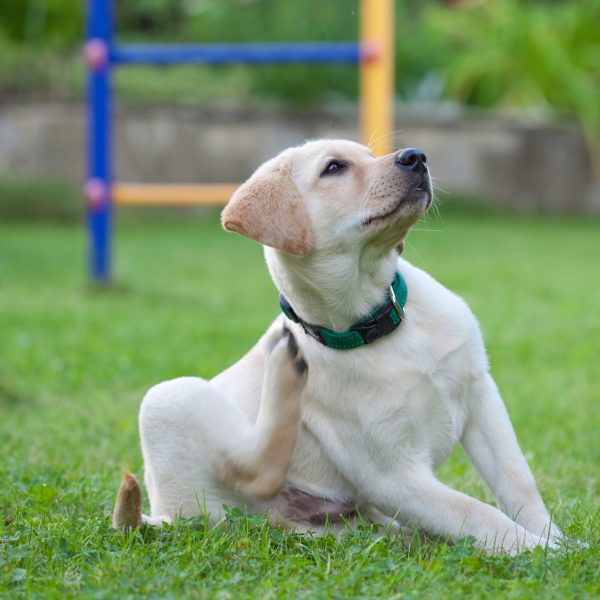How to Make Homemade Flea Powder
 Caring for pets can get expensive. Between the weekly cost of dog food, the vet bills and vaccinations, necessary extras like toys and sweaters, and products that keep potentially dangerous insects away, having a dog is not cheap. But, there are ways to cut down on expense without cutting any corners when it comes to your dog’s health. For example, you can make your own doggie flea powder. Plus, making homemade flea powder ensures pups or people with sensitive skin won’t get irritated.
Caring for pets can get expensive. Between the weekly cost of dog food, the vet bills and vaccinations, necessary extras like toys and sweaters, and products that keep potentially dangerous insects away, having a dog is not cheap. But, there are ways to cut down on expense without cutting any corners when it comes to your dog’s health. For example, you can make your own doggie flea powder. Plus, making homemade flea powder ensures pups or people with sensitive skin won’t get irritated.
What we put on our pets can also get on us. While most of these products are regulated, there are still some definitely dangerous products out there on store shelves. Why use potentially toxic chemicals or buy overpriced products when you can concoct your own harmless flea powder at home?
How to Make Homemade Flea Powder
You will need:
- 1 cup diatom flour (also called diatomaceous earth or DE)
- 1/2 cup neem powder
- 1/2 cup yarrow powder
- 15-20 drops of eucalyptus essential oil
If you don’t have a store near you that sells these things, you can find all of these products on the internet. If you do choose to purchase off the internet, be sure to only order from established, reputable sources to ensure you are getting a quality product. Also, make sure you are buying food-grade diatomaceous earth as this is the only version that has been recognized as safe for animal and human use, including consumption.
Once you have everything you need, simply mix all ingredients in a container with a shaker top, like a Mason jar with holes drilled in the cap or a giant salt shaker.
About the Ingredients
Diatom flour is a soft powder that currently has several commercial uses, including thermal insulation, liquid absorption, filtration aids, and more. It’s made from an easily crumbled sedimentary rock consisting of the fossilized remains of diatoms, which are microscopic hard-shelled, water-dwelling organisms.
Although their cells have nuclei, these tiny organisms are not a fungus, plant, or animal. The powder feels soft to the touch and is safe for your dog, but is deadly to insects. You will want to use food-grade quality diatom flour for your homemade flea powder. The food-grade diatom flour is a little more expensive than a lower grade, but since ingestion is possible, you want to make sure you are using food-grade. As mentioned previously, this is the only type recognized as safe for animal and human use, including for consumption. Other types of diatomaceous earth, like crystallized or filter grade, can cause issues if breathed in over long periods of time.
Neem is an Ayurvedic herb that impedes the development of insect larvae. Neem also contains moisturizing properties, which counteract the drying effect diatom flour can have on skin. Yarrow doesn’t protect against insects but, in its capacity as an anti-inflammatory, helps with any wounds, infections, or irritation your dog might have gotten from flea bites or scratching. Finally, eucalyptus essential oil is a very strong natural insect repellent. It also has slightly antiseptic properties that also help soothe irritation and promote healing after bites.
How to Use Your Homemade Flea Powder
To use this powder, sprinkle it along your pup’s spine, head to tail, and then run a comb or brush backward through your dog’s coat to make sure it gets to the skin. Don’t forget to powder your pup’s belly and legs, but avoid the eyes and nose.
During flea season, apply the powder monthly and after baths or rain storms – even after your pup goes under the sprinkler. Since it’s a powder and will dissolve when it gets wet, it’s a good idea to reapply whenever your pup gets wet. You should also apply the powder more often if you have an actual flea infestation.
If you have a flea infestation in your house, it means that there are flea eggs in the places where you or your pets spend the most time. This powder can be spread around the house to help eliminate the problem, but it will take several weeks of diligently applying powder and also vacuuming weekly to get rid of it. Make sure you focus on the areas most highly trafficked by your pets for it to make the most difference.
